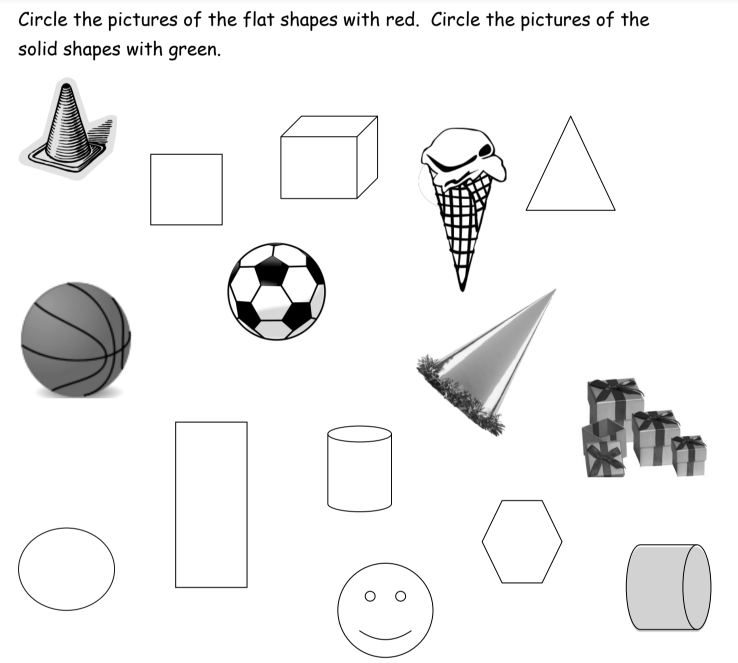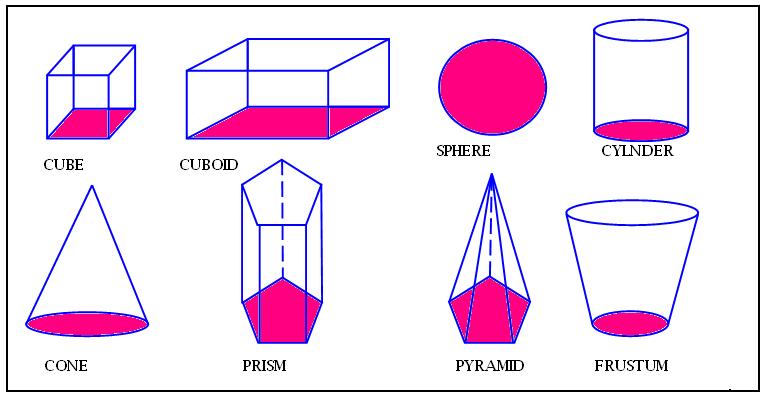


It features three rectangle-shaped faces and two triangle-shaped faces. It has 12 edges and eight corners.Ī triangular prism has five faces. The size of the opposite faces is constant. There are six faces on a rectangular prism. The faces, edges, and corners are all the same size and length. There are 12 edges on it with eight corners. Some examples of 2D shapes include circles and polygons like triangles, squares, rectangles, etcetera. They just have the length and width as dimensions.

Two-dimensional (2D) shapes are flat shapes that lack thickness or height. Number of corners or vertices: Three ( 3 ) Number of corners or vertices: Four ( 4 ) There are defining and non-defining attributes when analyzing shapes. Shapes can also have patterns some feature dots, stripes, or other design elements.

Additionally, shapes can come in a variety of colors some are yellow, some are blue, some are red, and some come in other colors. A shape might be small or large depending on its size. The color, size, pattern, direction, and orientation of a shape can all vary. Non-defining attributes do not always apply to the shape. For us to define a shape, certain characteristics of the shape must exist or be true. They must be closed figures with certain number of sides, corners, or vertices. These shapes are both medium in size, green-white, and orange, but are they the same shape?ĭefining attributes are distinguishing characteristics of shapes. These shapes have attributes that can be used to define them. We can see the four 2D faces on the net of the triangular-based pyramid below.Let us try to analyze the shapes to the right. We can see the 2D shapes on the triangular-based pyramid below. We can see the square surrounded by four triangles shown on the square-based pyramid net below.Ī triangular-based pyramid has four triangular faces, one on its base and three on its sides. We can see the net of a triangular prism below showing the 2D faces on its surface.Ī square-based pyramid has one square face on its base and four triangular faces.Ī square has four sides and so the square base has a triangle attached to each edge. The back face is a triangle that is identical to the front face. We can see the net of the cone below, showing its circular 2D face.Ī triangular prism has two triangular faces surrounded by 3 rectangular faces. However, sometimes curved surfaces are included. We can see the 6 2D faces of a cuboid in the net below.Ī cone has one flat circular face as its base and one curved surface that wraps around the circular face.Īgain, faces are technically flat and so the only face on a cone is the circle on its base. Therefore it has 6 faces just like a cube does. It is a 3D rectangle.Ī cuboid is a stretched cube. Each face is identical in size to the face opposite to it.Ī cuboid is a box-shaped 3D shape. Here is the net of the cylinder with the faces shown.Ī cuboid has 4 rectangular faces. It is easiest to see the 2D shapes on the surfaces by looking at the net of the cylinder. We can see from the net below that this curved surface can be made from a rectangle wrapped around the side of the circles. Technically, faces must be flat and so this curved surface is not always counted as a face of a cylinder. The side surface is curved, wrapped around the circular edges. We can see that the two circular faces are opposite to each other. It looks like a circle lifted upwards out of the paper it is drawn on. The side surface is a rectangle wrapped around the circles into a tubular shape.Ī cylinder is a tube shaped 3d shape. Using this net, we can see that it is made up of 6 square faces.Ī cylinder has 2 circular faces on the top and bottom. This is one of the eleven different nets for a cube. We can see the 6 faces of a cube by rotating it as shown or we can look at its net shown below. Each square face is directly opposite another square face. These 6 square faces are identical and are all at right angles to each other. All of the edges on a cube are the same length and so, all of the faces are the same.Ī cube is made up of 6 square faces. We can see a list of some common 2D shapes on the surfaces of 3D shapes on the poster below:Ī cube is a 3D square. To identify 2D Shapes on the surface of 3D shapes, rotate the 3D shape to look at each face or use a net of the shape to help you. These faces are often some of the 2D shapes that we know. Many common 3D shapes are made up of flat surfaces called faces. 3-dimensional shapes can be picked up and exist in real life. 2D shapes only exist on flat surfaces, such as screens or paper.


 0 kommentar(er)
0 kommentar(er)
